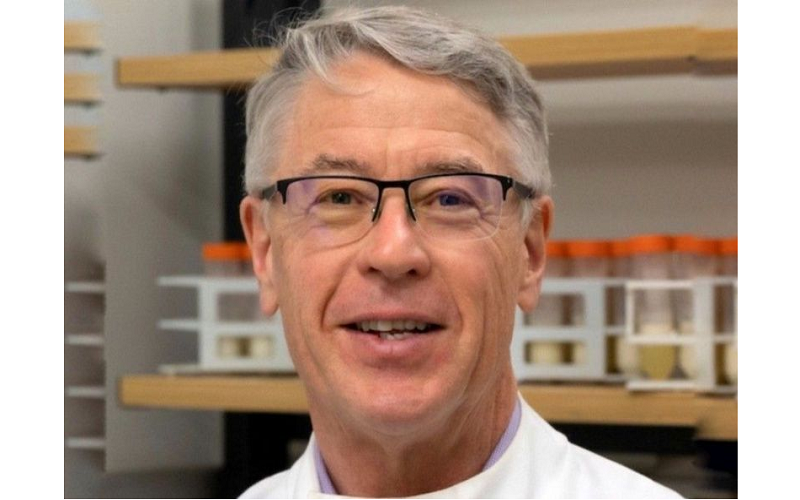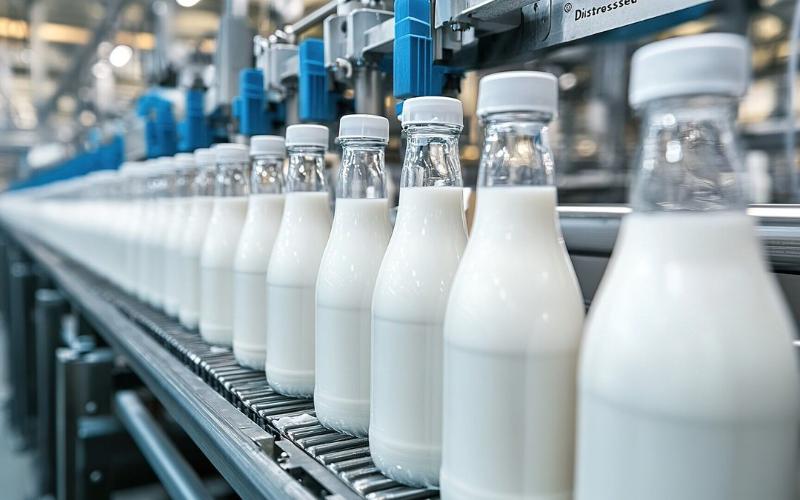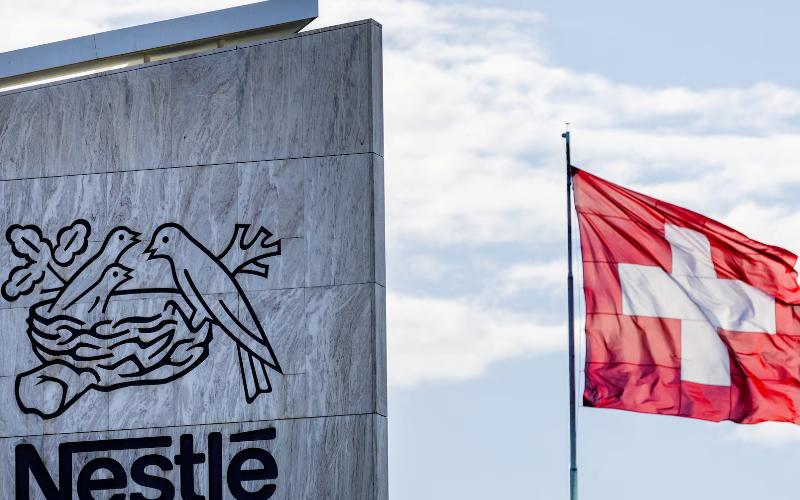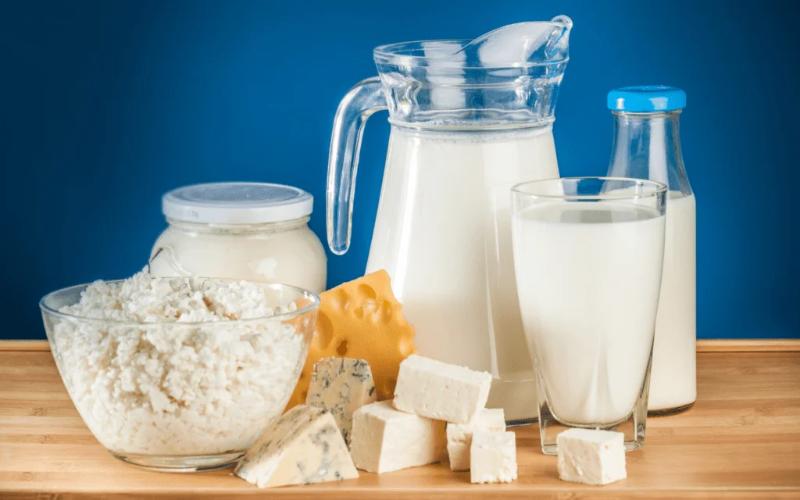PPB Technology: How an Australian Biotech Startup is Scaling to Become a Global Player
The Australian company PPB Technology has become the technological partner of the largest annual event in the dairy industry — the Dairy Olympics, which will take place from April 7 to 11, 2025, in the UAE. The Dairy Olympics serves as a unique platform for showcasing innovations and exchanging experiences among leading players in the dairy industry from around the world. In an interview with TheDairyNews, the founder and managing director of PPB Technology, Stephen Trowell, shared how a small Australian startup grew into an international company in just a few years, discussed effective marketing strategies, and emphasized the importance of finding the right market-product fit.

Dr. Trowell, could you tell us about your company PPB Technology and how it has evolved since its inception?
— The company PPB tech was established in 2018, so that's quite a long time ago, to commercialize the revolutionary new food diagnostic technology, CYBERTONGUE®. And since then, I think we've gone through three or four phases. In the first three years, at least fr om the outside, not much seemed to be happening. We were negotiating the technology licences with the CSIRO, Australia's national research agency, wh ere the tech came fr om. We were raising capital and that was a slow process to start off with, and simply surviving the pandemic, which I'm sure all your readers all remember. That was the first phase and then things started to happen faster. Maybe three years ago we raised our first round of capital.We used that to completely rebuild the technology fr om what was a laboratory demonstrator to a practical commercial technology or product if you like. And then we were doing all the early marketing. Now we're starting to deliver product to customers and building our scale. There have been some quite clear transitions, with the last one really coming in the last maybe even three or four months when sales started to take off. And we've gone from a two people, a year ago, to five people now. So, the company although it's very small has been growing.
How did you create a market for your product from scratch? Which strategies proved to be the most effective?
— If I go back a step, we looked at our options because with this technology we could solve a wide variety of problems in the food diagnostic, food testing area. But obviously we couldn't do them all at once. We decided after a bit of thought to tackle a problem that had not been solved before. So we settled on as a need the dairy industry had that they didn't have a solution for. There are protease enzymes that lim it the shelf life of long-life milk. To address that problem, we realized we would need to create the market from scratch. We wouldn't be competing in an existing market. That was a deliberate decision of ours. From the start we did a lot of research on the problem, which included laboratory research. We had a tool that nobody else had, so we could understand the problem better, I think, than anybody else had before us. And obviously we had the benefit of all the other research that happened before us, so we understood the problem really well.
At the same time, we started doing a lot of content marketing. This actually goes back five or six years ago, so we were providing free technical information to the industry, to our future customers, in a form that was easily digested, not a scientific paper, but more of a technical industry paper. And we targeted that to quality professionals in the global dairy processing sector. It meant identifying those people and connecting with them, primarily through LinkedIn. But we also use personal networks and we did conference presentations: scientific conferences and industry conferences, articles in trade literature and scientific journals, and we started all of that a long way back. We got out to see people. Whenever we could, we would go and see people. One of the things we did, in the early days, was to offer a testing service. We never intended to provide a testing service in the long run. Our business model was not to be a service laboratory, but we started by offering a testing service. We weren't making any money on it, but it brought us close to our customers. It built awareness, their awareness of us. It built links and connections and trust.
Also, for us, it meant we got to understand the future customers, what their needs were and allowed us to go deeper into their problems. That was a deliberate strategy of ours. Customers got this early look at our solution so we were starting to build a bit of demand there. And it helped us build our brand recognition and reputation. In terms of the content marketing, we kept doing it and we're still doing it today. It meant that when people in the industry had the problem we solve, they started calling us from all over the world. That is essentially how we got our first customers. Until now we haven’t spent a single cent on any traditional advertising in any media, because it would be a waste of money. The proportion of people seeing the ad, who would actually be potential customers, would be very small. So we haven't advertised. We have been much more targeted. And, of course, we have got to the point now wh ere we're starting to get word of mouth recommendations both within large corporations and even between companies.
Expanding on the idea of content marketing, we deliberately set ourselves up as the world expert on the problem of proteases in raw milk. What we've been doing is communicating our understanding of the problem to potential customers. We haven't been doing a hard sell of our solution. Yes, we talk about our solution, but mostly we're providing information for free. We have had some very powerful recommendations, they're starting to build now, but I would say that's the second phase, that's when you know it's taking off. To start with it was content-based outreach and then the incoming demand. Prior to our solution people knew they had a problem, because it was costing them money, but they didn’t fully understand how to control the problem. They understood some of it, but they didn't understand the detail of how that problem was arising, and that's what we’re now educating them on.
How did you determine that you had achieved product-market fit? What key indicators signaled this?
— I went through some startup incubators. I've read a lot about startups and the Strategizer framework, which talks about product market fit. What I used to think, I used to think that if we had a solution to the problem and a few customers, early customers, had bought it, well that proved that we had product market fit. But then, more recently, I came across a much more rigorous requirement for product market fit. That was fr om a group called Y Combinator. I don't if you know of them, they're probably the most famous incubator in the world. They’re based in Silicon Valley. Some of the biggest tech companies have come out of them. I was watching one of the YouTube videos they put out and they said: “You don't have product market fit until you can't keep up with demand, that's real product market fit”. And they're talking about a million dollars of sales a month or whatever.
I realized that they have a much more restrictive definition of product-market fit. They also said that when you start to see product market fit, it's actually not a comfortable thing. It’s challenging and uncomfortable, because then your company cannot keep up with customer demand. We’re not quite at the stage yet, but we're seeing early indications of it. I would say we're starting to see early indications of that product market fit because we're we've got more demand than we can manufacture right now. Luckily, we've got some stock, but that's how I would say we would know we're getting close to product-market fit. What is happening is that suddenly potential customers are sending us more purchase orders than we were expecting. Suddenly, it goes from lots of marketing work, trying to build this market without much to show for it to feeling that the dam is breaking. Suddenly we were seeing there's another one overnight and you got three over the Christmas New Year period. For me that's starting to meet that definition of product market fit. You can convince yourself you've solved the problem, but until people, quite a few people, are prepared to pay, you may be fooling yourself.
What were the main challenges and rewards you encountered when transitioning from a biotech startup to the “scale-up” stage?
— I think the challenges at one level are the same as in an established business. You have to balance your sales with your supply chain, your manufacturing and fulfillment (we are a manufacturing company) while not running out of cash. So, most businesses, at least in manufacturing, would understand those demands. But there are maybe two or three additional challenges when you're a small startup, and the first thing is the old joke that being in a startup is like trying to build an airplane while you're already flying it. We’re actually building our systems and processes as we're scaling up. For most of us, most of my team come from a scientific background, we've never done any of this before. So, it's not just that we’ve got to build it new for this company, but we've got to build it new for ourselves.
Now, we just got to the point wh ere we’ve brought people in who have had business experience but it’s still a really challenging stage. So, I guess what I'm saying is our capital reserves and our human resources they're much smaller than any sort of established company, even a medium-sized one. Therefore, everything is more fragile. There’s more risk. In terms of the rewards, well we knew it was a valid technology, but we're now starting to see that this is a viable business as well, and that's a big reward in itself. At one and the same time it's challenging, but generates a huge sense of fulfillment and achievement. The second thing is we're always learning, because these are all new experiences for us. So, every day, every week, we're learning new things, whether it's about how to put together a supply chain, how we've got to improve our quality systems or navigate the complexities of international trade. That brings me to another point.
We were born as an exporting company. We have a market in Australia, but our first sale was overseas and most of our future markets will be overseas. Learning all this stuff about international trade and how to do the logistics, that's all new to us. Meeting those challenges and overcoming them then it is a reward in itself for me and, I think, for my team. Furthermore, when you're in a startup it's all a hypothesis. We and our investors are making an educated guess, that we think our technology provides a valuable solution to solve our customer’s problem. But until you get to that scale up phase and actually start shipping and you're seeing money come in, see the invoices are being paid, until you get to that point you can't be sure you’re right. This is different fr om an established business.
Say I'm a milk processor, for decades I'd be putting milk on the shelves and the market may change over time. But I don't have any doubt that if I'm competitive there is a market for my product in the I don't have any doubts about how to ship my product to the supermarket shelf. For the milk processor, that’s all established, whereas in a scale up, as we're starting to be, we are creating those systems from scratch. That’s a challenge. But at the same time, when we learn how to do those things, it's a great sense of achievement. We’re starting to believe in the viability of the business because we're getting revenue. Before the last year we had very little revenue at all, now we're starting to see our revenue climb. That is hugely rewarding for us and potentially for our investors.
What are your plans for the future of PPB Technology? Are there any new markets or products you are considering?
— To be clear, right now we just have a total laser focus on expanding the sales of our instruments and the protease tests into selected export markets, which include Europe and some other places. We have already developed some more tests. One of them is in early stage production and we're doing some customer testing of a pasteurization test with Australian customers. This is not a new market, there are tests out there for safe pasteurization already, but our test is better and faster and easier for everyone to use. We've also got, not far behind it, we've got a test for trace lactose, for all those manufacturers who are making reduced or zero lactose dairy products. Those two new tests are on the way to the market. Beyond that there are a range of other tests we want to develop, but we haven't developed yet. The list includes allergen tests, I might have mentioned them last year, heavy metal tests, mycotoxin tests. For many of those tests, they're relevant to the dairy industry, but they're also relevant to the rest of the food industry. So, I guess that's the final step, build some new tests, but also start to expand beyond the dairy industry to the broader food industry as well. We are totally focused on dairy at the moment but, in the future, we believe this technology will be very suitable for other food processers and manufacturers.
What changes do you anticipate in the dairy industry over the next 5–10 years, and how do you plan to adapt your technologies to these changes?
— I'm very optimistic about the dairy industry and the reason we want to go beyond the dairy industry is not because we would ever drop the dairy industry. We would see that as - sort of a home base if you like. Personally, I think that demand for dairy products will continue to grow, and when I look at the research on this, that's what it tells me. I get to see the same sources of information as I'm sure you and many of your readers would. I think the growth of dairy is not going to be so much in places wh ere the dairy consumption is already very high. So, for example, I don't think dairy consumption is going to increase a great deal in north western Europe because it's already very high. But I think in a number of other places and in a lot of middle-income countries, some of them with very large populations, it's clear that dairy consumption is increasing. And those who know this area much better than I do, say it's actually going to be quite hard for production of dairy to keep up with demand. So, I think we're going to see more local production.
Many countries want to increase their local production of dairy and not to have to increase their imports of dairy. We know that only 50% of dairy in the world these days goes through a factory, a lot of it is consumed locally by the family or close by. So, I expect the general world trend is for more dairy production to go through processing to stabilize it and make it last longer. That’s a bit of a guess on my part. I think we're also going to see big focus on improved yields, as we saw last year at the Dairy Olympics, China has managed to massively increase yield per cow over the last 10, 15 years. I think we'll see that happening in other countries as more investment comes in. I think there's going to be a huge focus, in addition to increasing yields, on reducing losses and waste. And both of those things, increasing yield and reducing losses, they are driven partly financially, but also the imperative to mitigate the greenhouse gas contribution of dairy.
I think that GHG emissions will continue to be the biggest challenge for the global dairy industry. But there are some big wins to be had for the dairy industry if we can mitigate those emissions. Obviously, you've got to maintain human nutrition. That's why dairy is so valuable. I can also tell you what I don't think will happen, I don't buy the concept of synthetic milk. The idea that you can produce whole milk or something like whole milk in a factory using fermentation at an economic price, I don't think that's going to be a significant contributor. Many of the companies attempting that may not even survive over the next 5 to 10 years. The only exception to that there are some niche applications. For example there's one company producing lactoferrin by fermentation. Lactoferrin is a single dairy protein but almost has the value of a pharmaceutical. I think there may be a viable business there, but there isn't a viable business that I can see in mimicking whole milk in a factory. I think there will continue to be plant-based dairy alternatives, but I don't think they're going to grow a great deal more and that comes down to the nutritional value and the price/ nutrition value equation in the mind of the customer. So, I think animal-based dairy is well positioned in that regard. My comments are primarily about cow's milk.
Previously, you mentioned the global issue of greenhouse gas emissions for the entire dairy industry. Is your company aiming to contribute to the fight against environmental pollution?
— That's one of the changes that's happened over the years, so we started off making a test that is applied to raw milk. NIZO, which is a Netherlands-based research organization, said something like 1/6 of all milk in the world is lost before it reaches the consumer. A lot of that is about poor quality through the supply chain. We think about it like this, when the milk comes out of the cow, it is fine. It is good milk, but then if there isn't proper hygiene and control through the supply chain, it can get spoiled. That leads to massive losses. I mean, if I do the calculations those losses are worth $150 billion US dollars every year. Our test is helping processors clean up their supply chain. This will not only improve the product, but can also reduce the the losses. In that way, we can indirectly contribute significantly to the mitigation of the greenhouse emissions of the whole dairy industry. I did a calculation which said that if you could get rid of all those losses and waste you would remove half of percent of all human generated greenhouse gases. Not half % of dairy or half percent of food, but half a percent of all human GHG emissions. Now I know you'll never get rid of all those losses and waste because of the law of diminishing returns, but the example serves to make the point. That would be thebenefit if you are able to clean up the supply chain and eliminate losses. I think that we can help the industry by giving them the tools, not only to save money, not only to improve the product, but also to reduce their greenhouse impact. There are some even bigger things that can be done by others, but our contribution would not be an insignificant one.
What advice would you give to other biotech startups looking to scale successfully?
— I'm worried about giving advice because I've only ever done one startup and every situation is unique. But I can say what we've done. Some of this may be useful for others if there are overlaps. So, the first I think is as a start-up, we had to identify and build trusted relationships very early on, with partners who could help us scale, because we didn't have the expertise, the facilities, or the capacity to scale quickly. We have a very particular and diverse manufacturing requirements. There are different manufacturing partners for different parts of our system. We built those relationships, I've actually built some of those personal relationships over 10 years, so when we're ready to scale, they knew about us and had the willingness and ability to scale manufacturing for us. You can't build those relationships overnight but we had prepared for it. Think requirements through and put in place what you need early on. Obviously, what I said is relevant specifically to a manufacturing company making biotech reagents and high-tech devices. If you do software as a service, it's a completely different game. The second thing I would say is when it comes to actually how you're going to deliver, you need to plan and cost everything out well ahead of time. I was preparing a year ago, in fact we had to understand how we were going to meet this demand when it happened. That’s a bit difficult because you ask people, then you get quotations, you put in place plans and then nothing happens for a year. But you can't do it the other way around. I think that scenario planning is really important. I think another rule is you have to plan for success. There's no point being cautious because if you plan for failure, you surely will fail. Be courageous and proactive I think is what I'd say.
Your company became the technology partner of the Dairy Olympics this year. What opportunities do you think participating in such a large-scale event provides?
— Well, I will give you an example, we attended the Dairy Olympic last year in Ankara and that for example gave us exposure in the Turkish market. We are already knew that Türkiye would be important for us, so it was just a fantastic opportunity, specifically in Türkiye, to get our message out. Another point is, that to create a market, especially when you are a tiny company from Australia, no one believes you got something special unless they can see the technology working. Last year it was a last-minute decision to attend, because I was not aware of the Dairy Olympics. Now I am seeing a potential growth in the reach and influence in the Dairy Olympics and also The DairyNews beyond its original footprint. It started in the Central Asian region but it is becoming more global now. The Dairy Olympics is a significant and growing world conference. So, in the UAE, which is already a global hub for food trade shows, we expect to get even more exposure, meet more people from a broader range of countries. We will have a booth to demonstrate our platform. So my message for others who are also attending the Dairy Olympics in 2025: “We will talk about how CYBERTONGUE® Technology can help manage global dairy supply chains, processes and produces, clean up the supply chain, essentially save money, have more milk supply without increasing inputs and really enhance the food industry and milk quality control”.
Interview conducted by Zaure Mederkhanova
Dairy Olympics 2025 is an international conference taking place April 7-10, 2025, in the UAE. It will bring together leading experts and specialists from the global dairy industry. This event will serve as a crucial platform for discussing current trends, innovations, and challenges facing the dairy sector. The Olympics will showcase cutting-edge technologies, sustainable solutions for dairy production, the prospects of digitalization, environmental concerns, and the growth of new dairy markets.
If you are interested in becoming a speaker or sponsor for Dairy Olympics 2025, please contact us at ads@dairynews.today
Gold Partners: Al Ain Farms, Imperial
Innovation Partners: Cowow, PPB
Partners: France Group, IFCM














